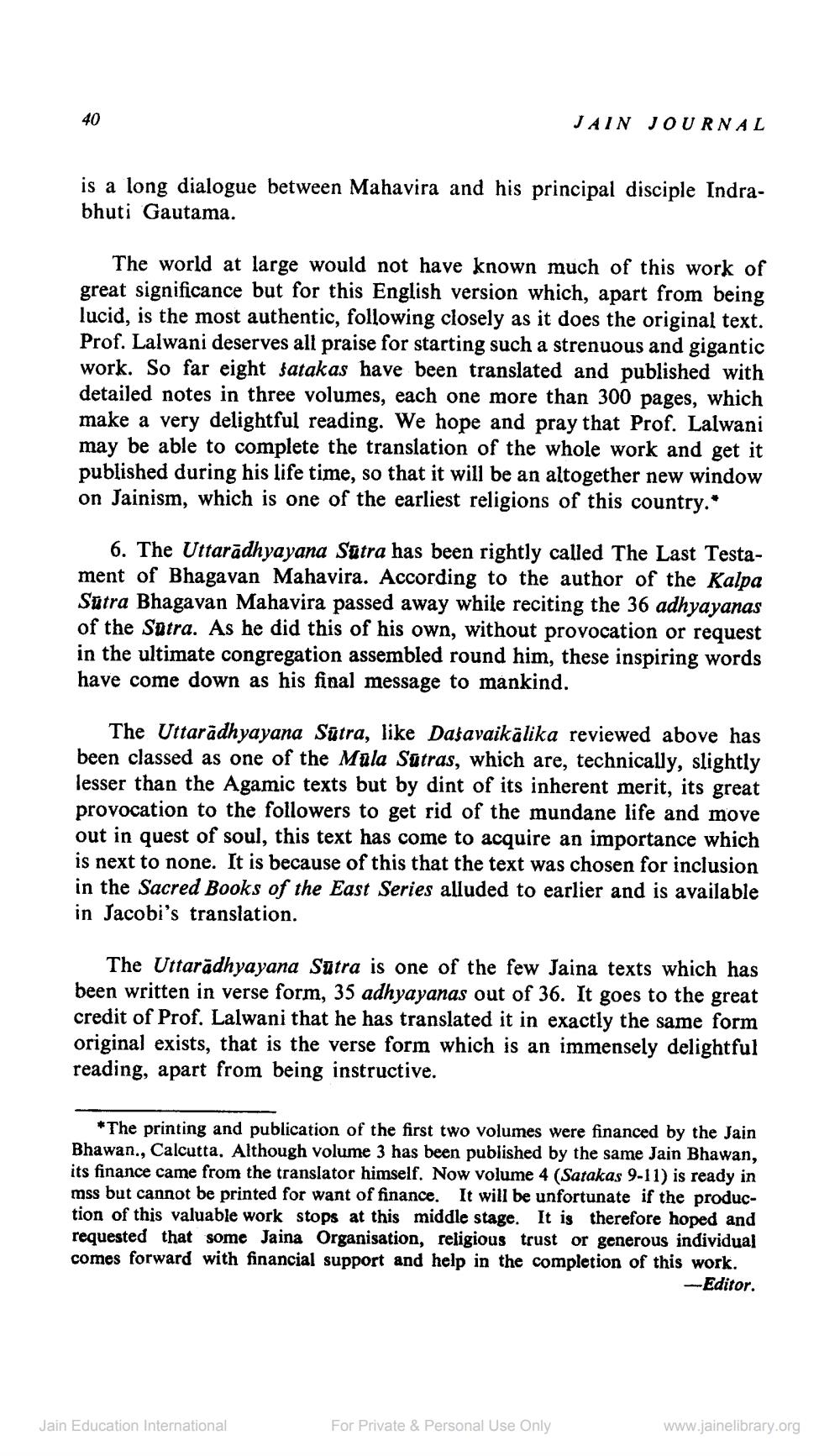________________
JAIN JOURNAL
is a long dialogue between Mahavira and his principal disciple Indrabhuti Gautama.
The world at large would not have known much of this work of great significance but for this English version which, apart from being lucid, is the most authentic, following closely as it does the original text. Prof. Lalwani deserves all praise for starting such a strenuous and gigantic work. So far eight satakas have been translated and published with detailed notes in three volumes, each one more than 300 pages, which make a very delightful reading. We hope and pray that Prof. Lalwani may be able to complete the translation of the whole work and get it published during his life time, so that it will be an altogether new window on Jainism, which is one of the earliest religions of this country."
6. The Uttarādhyayana Sutra has been rightly called The Last Testament of Bhagavan Mahavira. According to the author of the Kalpa Sutra Bhagavan Mahavira passed away while reciting the 36 adhyayanas of the Sotra. As he did this of his own, without provocation or request in the ultimate congregation assembled round him, these inspiring words have come down as his final message to mankind.
The Uttaradhyayana Sutra, like Datavaikälika reviewed above has been classed as one of the Mala Sutras, which are, technically, slightly lesser than the Agamic texts but by dint of its inherent merit, its great provocation to the followers to get rid of the mundane life and move out in quest of soul, this text has come to acquire an importance which is next to none. It is because of this that the text was chosen for inclusion in the Sacred Books of the East Series alluded to earlier and is available in Jacobi's translation.
The Uttarādhyayana Sutra is one of the few Jaina texts which has been written in verse form, 35 adhyayanas out of 36. It goes to the great credit of Prof. Lalwani that he has translated it in exactly the same form original exists, that is the verse form which is an immensely delightful reading, apart from being instructive.
*The printing and publication of the first two volumes were financed by the Jain Bhawan., Calcutta, Although volume 3 has been published by the same Jain Bhawan, its finance came from the translator himself. Now volume 4 (Satakas 9-11) is ready in mss but cannot be printed for want of finance. It will be unfortunate if the production of this valuable work stops at this middle stage. It is therefore hoped and requested that some Jaina Organisation, religious trust or generous individual comes forward with financial support and help in the completion of this work.
-Editor.
Jain Education International
For Private & Personal Use Only
www.jainelibrary.org




